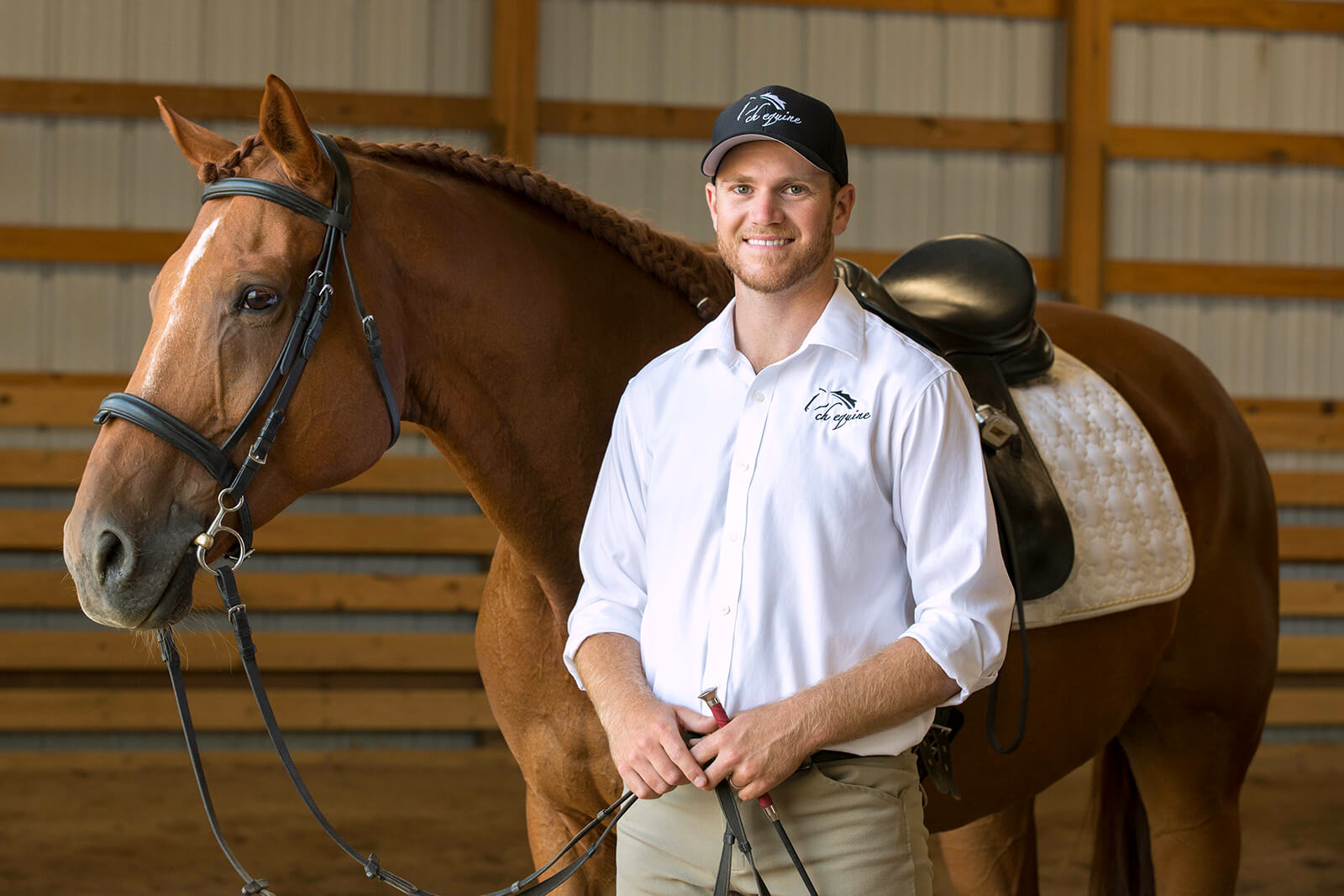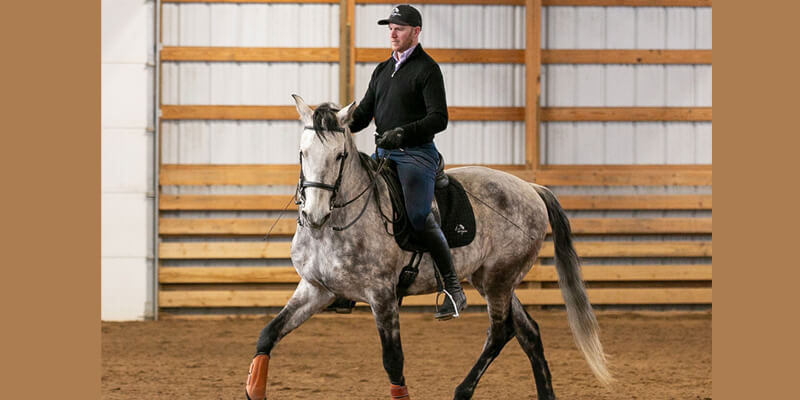(Photo Caption: Zadiba, a Lusitano gelding owned, trained, and ridden by Cody Harrison, performs shoulder-in with good balance and in self-carriage.)
With Balance, Your Horse Can Confidently Fulfill Almost Any Request
One of the most fundamental components of training a horse needs to develop is correct balance. If the balance is not correct for the movement you are working on, your horse will develop incorrect muscles. Along with balance, you must remain light to allow your horse to stay supple. You can’t force a horse to be balanced. You can only assist him in where to be and how to move. If you try to force him, you’ll find resistance, which will only do the opposite of balancing him. You might be able to force your horse into a position he should be in for proper balance, but because the horse does not commit to the position on his own, he won’t truly be in balance.
For a horse to do any movement properly and to be able to move forward more freely, he needs to be in a balanced position first. The position that a horse is best balanced in will change over time as training progresses. You can only ask a horse to be as balanced as he’s capable of understanding, willing, and able to be in. The position of a young horse for the best balance he can have will be in a longer frame than that of a horse with three years of training. The horse needs to be able to be balanced in different positions. There’s no need to keep a horse in one position for more than a few minutes. This may cause your horse to fatigue and begin to compensate with incorrect muscles that will not allow your horse to move as freely as he can.
Your horse’s balance will change with every movement and transition. Regardless if there’s a transition within the gates, left to right, or from one lateral movement to another. It is essential to know where his balance needs to be and understand what level of balance he’s are capable of (collection). Balance comes from constant progress and constant adjustment.
It’s up to you to teach your horse how to respond to the aids and be comfortable with what you ask. If your horse is comfortable and understanding of the aids, you’ll have a horse that’s willing to adjust to the aids as you request them. When a horse willingly adjusts any body part without force or fear from your aids, he’ll do so in relaxation. If your horse is comfortable with what’s going on in the environment and isn’t worried about what’s being asked of him, your horse will be calm. If you don’t use force to control your horse, there won’t be any stiffness because there’s nothing to brace against. Therefore the horse doesn’t feel the need to protect himself.
As time goes on, and you can get more control of your horse’s body, you’ll be able to be more specific with his balance. When your horse can achieve proper balance, other issues don’t occur anymore. For instance, falling in or out on a turn, stiffness in the back or hind end, falling on the forehand, tripping, rushing, and more will no longer be problems. Improving balance, regardless of your issue, will help solve your problem. Sometimes horses can’t do what’s asked of them because they’re not in the proper balance to perform the movement. A horse will resist what’s asked knowing that it’ll only take him farther out of balance. Being in balance will help a horse feel comfortable and more secure—as long as it’s not forced. Riding your horse in correct balance is imperative for his health and longevity.
See this article in the November/December 2022 online edition:
November/December 2022

Cody Harrison focuses on the individuality of the rider and horse. He works with each rider to find balance physically, mentally, and emotionally. Once the person is balanced, they can then focus on shaping the horse. He customizes each work session to create an environment where the rider can be successful. Through experience he’s seen that when a rider works with a horse through balanced energy, they discover their own personal strength and remarkable things happen. Learn more about Harrison’s philosophies and clinics at ch-equine.com






